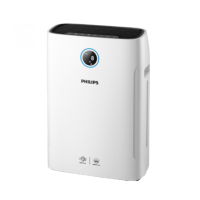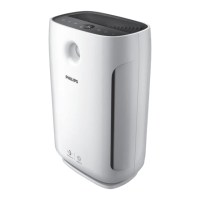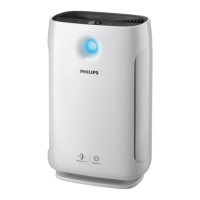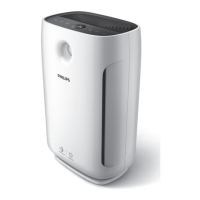13EN
5 Cleaning
Note
• Always unplug the appliance before
cleaning.
• Never immerse the appliance in
water or any other liquid.
• Never use abrasive, aggressive, or
ammable cleaning agents such as
bleach or alcohol to clean any part
of the appliance.
• Only the pre-lter and NanoCloud
rotary humidication wick are
washable. The NanoProtect lter
is not washable nor vacuum
cleanable.
Cleaning schedule
Frequency Cleaning method
When
necessary
Wipe the surface of the
appliance with a soft
dry cloth.
Every week
Rinse the water tank,
the water tray and
the NanoCloud rotary
humidication wick.
When the
cleaning
icon
lights up
and F0
displays on
the screen.
Clean the pre-lter.
Descale the NanoCloud
rotary humidication
wick with the water and
white vinegar (5% acetic
acid) or water and citric
acid.
Cleaning the body of the
appliance
Regularly clean the inside and outside
of the appliance to prevent dust from
collecting.
1 Wipe away dust with a soft dry cloth
from the body of the appliance.
2 Clean the air outlet with a soft dry
cloth.
Cleaning the air quality
sensor
Clean the air quality sensor every
2 months for optimal functioning of the
purier. Clean them more frequently
if you use the purier in a dusty
environment.
Note
• When the humidity level in the
room is very high, it is possible that
condensation develops on the air
quality sensor. As a result, the air
quality light may indicate that the
air quality is bad even though it is
good. In this case you have to clean
the air quality sensor or use one of
the manual speed settings.
1 Clean the air quality sensor inlet
and outlet with a soft brush (g. ‚).
2 Open the air quality sensor cover
(g. ƒ).
3 Clean the air quality sensor, the
dust inlet and the dust outlet with a
lightly moistened cotton swab
(g. „).
4 Dry them with a dry cotton swab.
5 Reattach the air quality sensor
cover (g. …).

